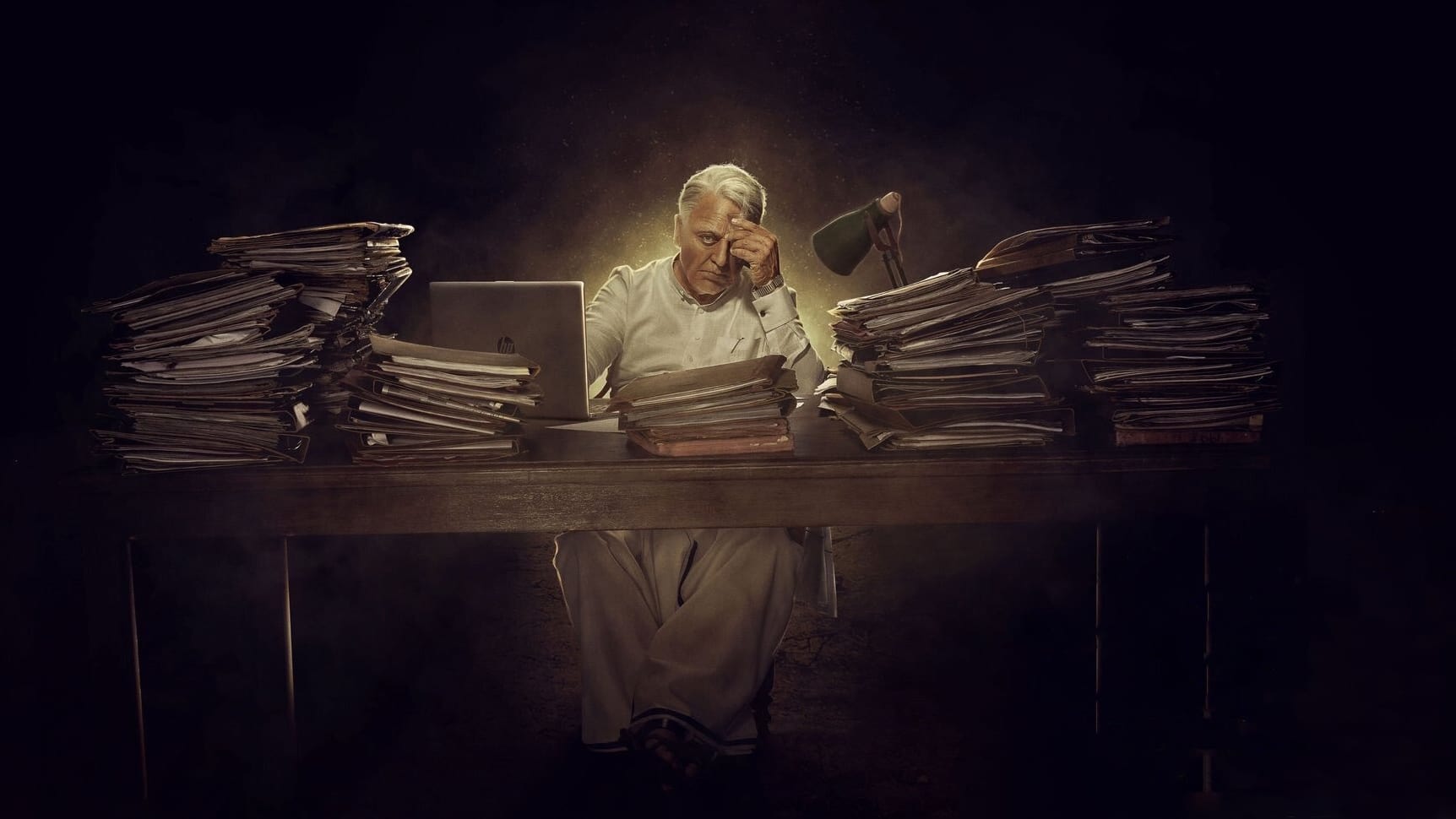- Published on
Indian 2 Movie Review

Pre-review
The 1996 film "Indian" has been broadcast over 100 times, demonstrating its high rewatchability due to its compelling drama. The movie features various storylines, including Chandru's quest for promotion, Thatha's criminal activities and escape from law enforcement with his wife, his background in the freedom struggle, a flashback to his daughter's death, and an independent comedy track. The film showcases excellent performances by Kamal Hassan and Nedumudi Venu, along with A.R. Rahman's outstanding music. However, the movie's greatest strength lies in its exceptional dialogue.
Mani Ratnam is considered a superior director to Shankar, possessing more artistic flair and a distinctive style. Although both directors collaborated extensively with Sujatha, Shankar seemed to extract better results from these collaborations. This raises questions about whether Shankar's ability to draw out the best from Sujatha was a unique skill, if Mani Ratnam's process was too inflexible to fully utilize Sujatha's talents, or if Sujatha's contributions were average and Shankar's input was the key factor.
Following Sujatha's passing, Shankar's career has experienced a significant decline, suggesting that Sujatha's contributions were indeed valuable. No suitable replacement for Sujatha has been found, and Shankar appears to be struggling to recreate his past success. His current approach involves creating a sequel, a strategy he has previously attempted without success. While the project is likely to generate substantial business due to the names involved and extensive publicity, its quality remains uncertain. Based on pre-release materials, there are concerns that it could be a disappointment and potentially tarnish the legacy of the original "Indian" film. The outcome remains to be seen.
Review
The movie “I” was better one than this. Shankar has reached a new low in his career with this film. It felt like a 7th-grade play for an Independence Day celebration. This movie is a significant disgrace to the original “Indian” film. Despite the massive budget and the extensive crew, with credits rolling in four columns featuring prominent industry names, the result is disappointing. Even with assistant directors like Vasantha Balan and ChimbuDevan, who are notable directors themselves, the outcome is poor. Shankar, unable to revive Sujatha’s essence, tried to extend elements from the old movie, but it failed to entertain.
The movie hasn’t evolved with the times but has merely been scaled up. While other films might use 5 shots for a montage, this one uses 13. For instance, in “Indian 1,” Senapathi explains through dialogue that he shaved his moustache because it hurt his son. In this movie, if the same scene was there then it would include Senapathi saying this, followed by shots of a de-aged Kamal holding a very de-aged baby Kamal, touching the moustache, asking him to shave, and then a shot of him shaving. They have taken the “show, don’t tell” approach to an extreme.
Siddharth and his team are social activists who manage media and expose issues online. Their videos take up a significant portion of the movie’s runtime but resemble government or political party ads during election periods. Despite their good intentions, their actions and behavior come across as impulsive and emotionally driven rather than based on facts or research. Additionally, they expect the police and government to act similarly, disregarding legal procedures.
Kamal, although the protagonist, appears in only a few scenes and, similar to Anniyan and I, kills people in various ways. Besides killing, he talks extensively, which becomes quite boring. In “Indian,” he used varma kalai to kill and silence people, but here, he makes people do things in an unbelievable manner, almost like hypnotism. He has expanded his fight from corruption to other scams and lethargy, much like Anniyan Ambi.
The highlight of the movie is Vivek, who brings back memories of Chari from Anniyan, which is heartwarming to see. He doesn’t speak much but adds value in many scenes. Even in the climax, he conveys a lot through his facial expressions and body language. This film marks the first collaboration between Kamal and Vivek. Bobby Simha, playing the son of Nedumudi Venu, doesn’t contribute much to the movie. It would have been better if they had brought in Prakash Raj from Anniyan, especially alongside Vivek.
The movie felt overall slow and had many unnecessary scenes. Similar to the ‘Shakalaka Baby’ song in Mudhalvan, there’s a calendar song here that feels completely pointless. The music was decent, but one song didn’t fit the movie at all, despite having many typical Shankar elements. However, the interludes of old Indian music were pleasant to hear.
Kamal, as Senapathi, discusses the contradiction in his own dialogue ‘Poi pullakuttingala padika vaingada’ given the rising unemployment rate. One could argue that this statement is incorrect as it was intended to combat ignorance rather than serve as a means to gain employment. There is also a dialogue about how people who used to write on bathroom doors are now writing online. Considering that even chief editors of some newspapers write inconsiderately and insensibly, this feels like an elitist and privileged statement. You might even this if he is senapathi or insenapathi
There is a surgery scene that is unprecedented and a blunder where a doctor, who became one through wealth, kills someone. This scene suggests that forcing someone to pursue a career against their interests, solely due to wealth, can lead to disastrous outcomes. While this is not entirely wrong, these scenes have little relevance to the rest of the movie and seem to reference Shankar’s daughter, who pursued medicine and became an actress. This reflects the level of writing in the movie.
The film feels like an Indian parody universe that you might watch once. It wasn’t intentionally made this way, but you can laugh throughout the movie with your friends.